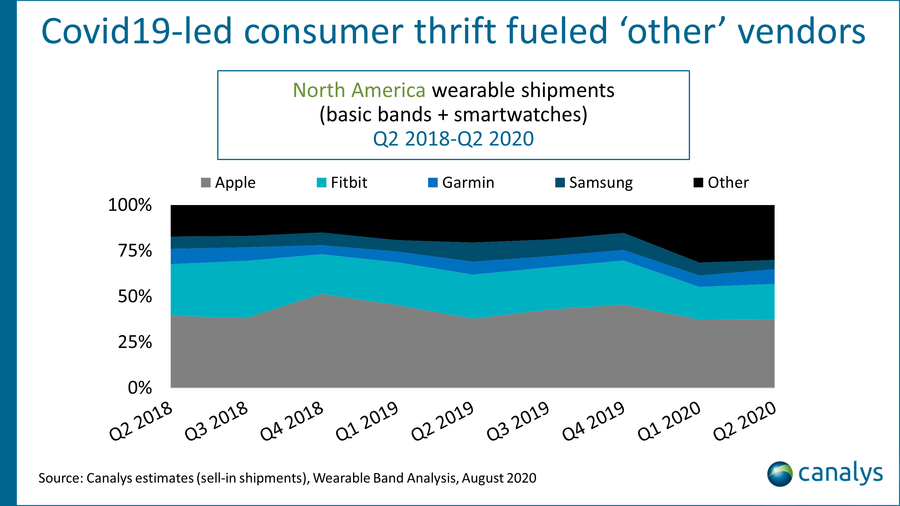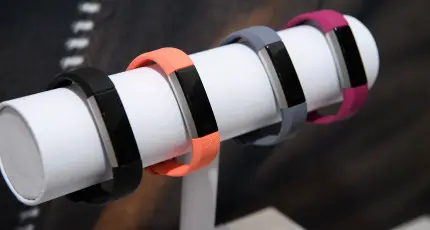While wearable fitness devices saw an uptick in shipments in North America for Q2, the overall dollar amount of the market remained steady, according to new numbers
out of Canalys
. The discrepancy can be chalked up to a decline in the average selling price of the products.
Continuing an overall trend for 2020, the COVID-19 pandemic has increased interest in wearable devices, as consumer look to both monitor their health and track step counts, as mass closing have made many more sedentary. Perhaps owing to large unemployment figures and a massive economic downturn, the decisions customers have been making are trending forward the more frugal end of the spectrum.

Image Credits: Canalys
“Americans invested heavily in sub-US$50 trackers during the pandemic to stay accountable for the greater amount of time spent at home,” analyst Vincent Thielke said in a comment tied to the figures’ release.
The numbers buck larger on-going wearable trends, which have found smartwatches starting to utterly dominate the conversation. Of course, results that can tied directly to the pandemic ought not be viewed as indicators of broader, on-going trends. They do, however, seem to open up a perhaps temporary opportunity to low cost device makers.
Amazon
is tricking while the iron is hot with the Halo band
, and a number of companies that have had continued success in Asia could potentially find an opening in the market. Subscription services appear to be the key way forward for monetizing relatively low-cost devices.
Apple
continues to dominate the category overall. That’s helped along by a bump in shipments for the Apple Watch Series 3. The three-year-old smartwatch saw a 30% year-over-year growth, as a $200 alternative to Apple’s higher end devices.
 简体中文
简体中文

